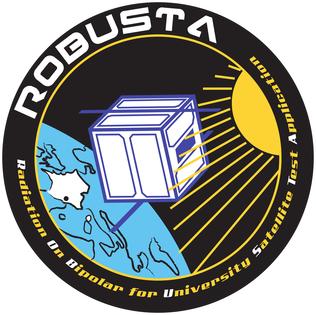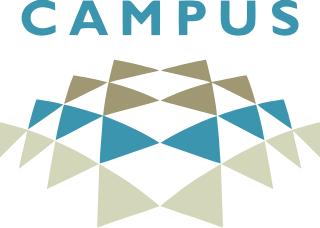
NanoCharm is a cooperation of eight European organisations and is an EU-Project founded in the 7th framework program. The goal of this European collaboration is to establish and enhance ellipsometry and polarimetry as a measurement tool.

NanoCharm is a cooperation of eight European organisations and is an EU-Project founded in the 7th framework program. The goal of this European collaboration is to establish and enhance ellipsometry and polarimetry as a measurement tool.
| CNR-IMIP Bari (Coordinator) | |
| CNRS Palaiseau Paris | |
| University Linz | |
| University Brno | |
| ISAS Berlin | |
| Institute of Physics, Belgrade | |
| Institute of Nanotechnology, Stirling, Scotland, UK | |
| Horiba Jobin Yvon |
Ellipsometry and polarimetry are methods to characterize samples according to their optical properties and composition. The measurements do not influence or destroy the samples and are calculated in real-time experiments. Therefore, these methods are suitable for characterizing samples in-situ and to further monitor the growth process.
The NanoCharm project aims to strengthen the collaboration of users (scientific and industrial) and their needs with the manufacturers of ellipsometers.
For this reason, the NanoCharm consortium is organising annual summer and winter schools during the three years of the project (from 1 January 2008 until 31 December 2010). Additionally, a website has been established to act as a platform for all users. The website provides news, a collection of literature, databases, a virtual lab and a forum for discussion.

A wiki is a form of hypertext publication on the internet which is collaboratively edited and managed by its audience directly through a web browser. A typical wiki contains multiple pages that can either be edited by the public or limited to use within an organization for maintaining its internal knowledge base.

Tiki Wiki CMS Groupware or simply Tiki, originally known as TikiWiki, is a free and open source Wiki-based content management system and online office suite written primarily in PHP and distributed under the GNU Lesser General Public License (LGPL-2.1-only) license. In addition to enabling websites and portals on the internet and on intranets and extranets, Tiki contains a number of collaboration features allowing it to operate as a Geospatial Content Management System (GeoCMS) and Groupware web application.
Web development is the work involved in developing a website for the Internet or an intranet. Web development can range from developing a simple single static page of plain text to complex web applications, electronic businesses, and social network services. A more comprehensive list of tasks to which Web development commonly refers, may include Web engineering, Web design, Web content development, client liaison, client-side/server-side scripting, Web server and network security configuration, and e-commerce development.

Ellipsometry is an optical technique for investigating the dielectric properties of thin films. Ellipsometry measures the change of polarization upon reflection or transmission and compares it to a model.

Polarimetry is the measurement and interpretation of the polarization of transverse waves, most notably electromagnetic waves, such as radio or light waves. Typically polarimetry is done on electromagnetic waves that have traveled through or have been reflected, refracted or diffracted by some material in order to characterize that object.

A polarimeter is a scientific instrument used to measure optical rotation: the angle of rotation caused by passing linearly polarized light through an optically active substance.
The MAWI Working Group is a joint effort of Japanese network research and academic institutions to study the performance of networks and networking protocols in Japanese wide area networks.
The Petrological Database of the Ocean Floor (PetDB) is a relational database for global geochemical data on igneous and metamorphic rocks generated at mid-ocean ridges including back-arc basins, young seamounts, and old oceanic crust, as well as ophiolites and terrestrial xenoliths from the mantle and lower crust and diamond geochemistry. These data are obtained by analyses of whole rock powders, volcanic glasses, and minerals by a wide range of techniques including mass spectrometry, atomic emission spectrometry, x-ray fluorescence spectrometry, and wet chemical analyses. Data are compiled from the scientific literature by PetDB data managers, and entered after methodical metadata review. Members of the scientific community can also suggest entry of specific data that has been entered into the EarthChem Library. PetDB is administered by the EarthChem group under the IEDA facility at LDEO headed by K. Lehnert. PetDB is supported by the U.S. National Science Foundation.
Scanning laser polarimetry is the use of polarised light to measure the thickness of the retinal nerve fiber layer (RNFL) as part of a glaucoma workup. The GDx-VCC is one example.

ROBUSTA is a nano-satellite scientific experiment developed by the University of Montpellier students as part of a Centre National d'Études Spatiales (CNES) call for student projects in the field of orbital systems.
P3G (Public Population Project in Genomicsand Society) is a not-for-profit international consortium dedicated to facilitating collaboration between researchers and biobanks working in the area of human population genomics. P3G is member-based and composed of experts from the different disciplines in the areas of and related to genomics, including epidemiology, law, ethics, technology, biomolecular science, etc. P3G and its members are committed to a philosophy of information sharing with the goal of supporting researchers working in areas that will improve the health of people around the world.

CAMPUS is a multilingual database for the properties of plastics. It is considered worldwide as a leader in regard to the level of standardization and therefore, ease of comparison, of plastics properties. It also supports diagrams to a large extent. CAMPUS is based on ISO standards 10350, for single-point value e.g. the density, and 11403, for diagrams, e.g. the Stress–strain curve.
MetPetDB is a relational database and repository for global geochemical data on and images collected from metamorphic rocks from the Earth's crust. MetPetDB is designed and built by a global community of metamorphic petrologists in collaboration with computer scientists at Rensselaer Polytechnic Institute as part of the National Cyberinfrastructure Initiative and supported by the National Science Foundation. MetPetDB is unique in that it incorporates image data collected by a variety of techniques, e.g. photomicrographs, backscattered electron images (SEM), and X-ray maps collected by wavelength dispersive spectroscopy or energy dispersive spectroscopy.
NanoHttpd is an open-source, small-footprint web server that is suitable for embedding in applications, written in the Java programming language. The source code consists of a single .java file. It can be used as a library component in developing other software or as a standalone ad-hoc style HTTP daemon for serving files.
Trees have a wide variety of sizes and shapes and growth habits. Specimens may grow as individual trunks, multitrunk masses, coppices, clonal colonies, or even more exotic tree complexes. Most champion tree programs focus finding and measuring the largest single-trunk example of each species. There are three basic parameters commonly measured to characterize the size of a single trunk tree: tree height measurement, tree girth measurement, and tree crown measurement. Foresters also perform tree volume measurements. A detailed guideline to these basic measurements is provided in The Tree Measuring Guidelines of the Eastern Native Tree Society by Will Blozan.
The GESIS – Leibniz Institute for the Social Sciences is the largest German infrastructure institute for the social sciences. It is headquartered in Mannheim, with a location in Cologne. With basic research-based services and consulting covering all levels of the scientific process, GESIS supports researchers in the social sciences. As of 2017, the president of GESIS is Christof Wolf.

Safecast is an international, volunteer-centered organization devoted to open citizen science for environmental monitoring. Safecast was established by Sean Bonner, Pieter Franken, and Joi Ito shortly after the Fukushima Daiichi nuclear disaster in Japan, following the Tōhoku earthquake on 11 March 2011 and manages a global open data network for ionizing radiation and air quality monitoring.

The characterization of nanoparticles is a branch of nanometrology that deals with the characterization, or measurement, of the physical and chemical properties of nanoparticles.,. Nanoparticles measure less than 100 nanometers in at least one of their external dimensions, and are often engineered for their unique properties. Nanoparticles are unlike conventional chemicals in that their chemical composition and concentration are not sufficient metrics for a complete description, because they vary in other physical properties such as size, shape, surface properties, crystallinity, and dispersion state.
Mathias Michael Schubert is a German physicist, J. A. Woollam Distinguished Professor of Electrical and Computer Engineering at the University of Nebraska-Lincoln, and member of the Nebraska Center for Materials and Nanoscience. He is a specialist in spectroscopic ellipsometry and has contributed to the development of blue and white LED, fast processors and efficient biological and chemical sensors. He is also visiting professor at Linkoping University and Associate Editor of the journal Applied Physics Letters.
Kimani Christopher Toussaint, Jr. is an American engineer who is a professor and senior associate dean in the School of Engineering at Brown University. His research considers the development of quantitative nonlinear optical imaging methods and advanced optical techniques for nanotechnology, and the characterization of plasmonic nanostructure. He is a Fellow of Optica.